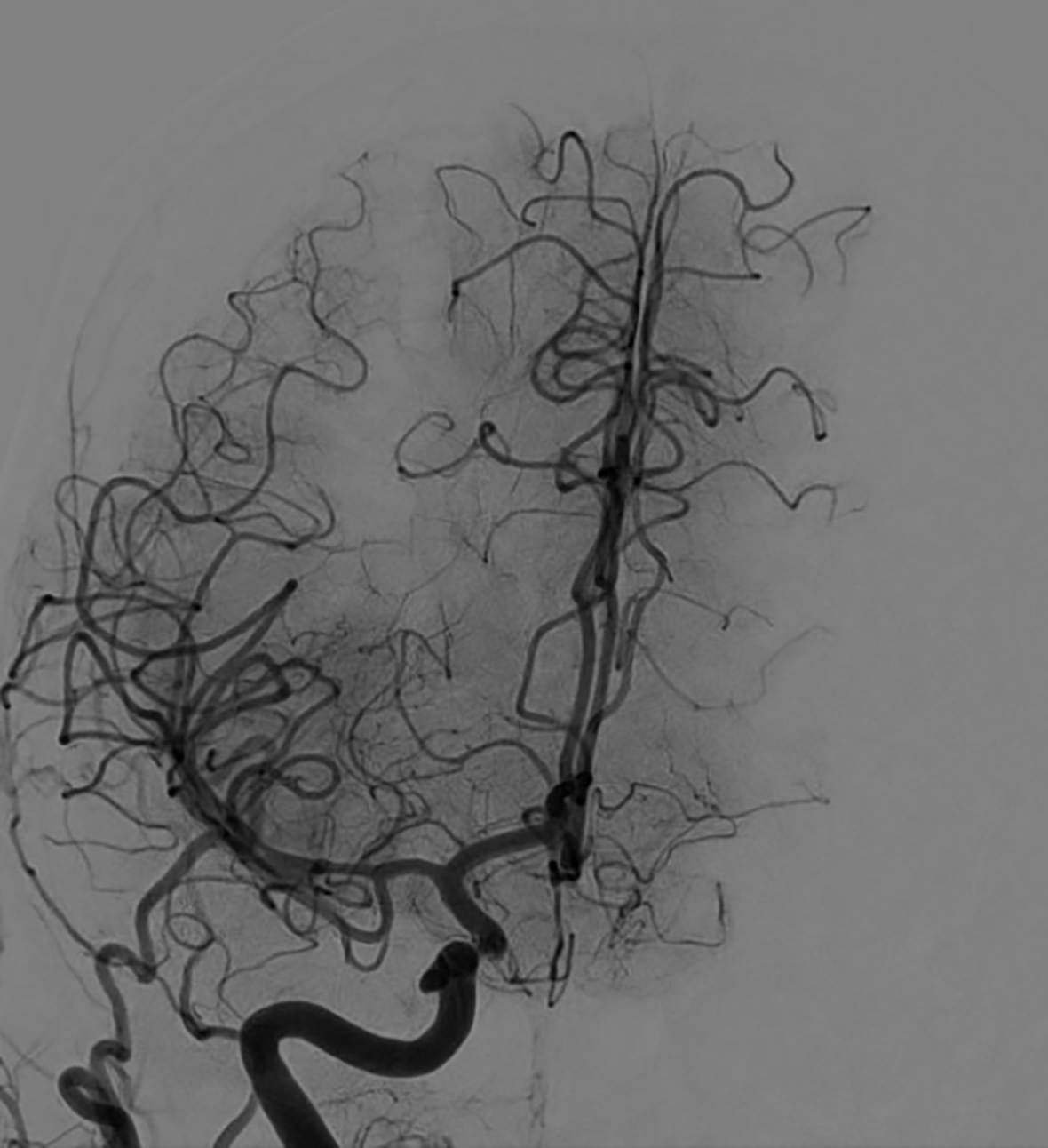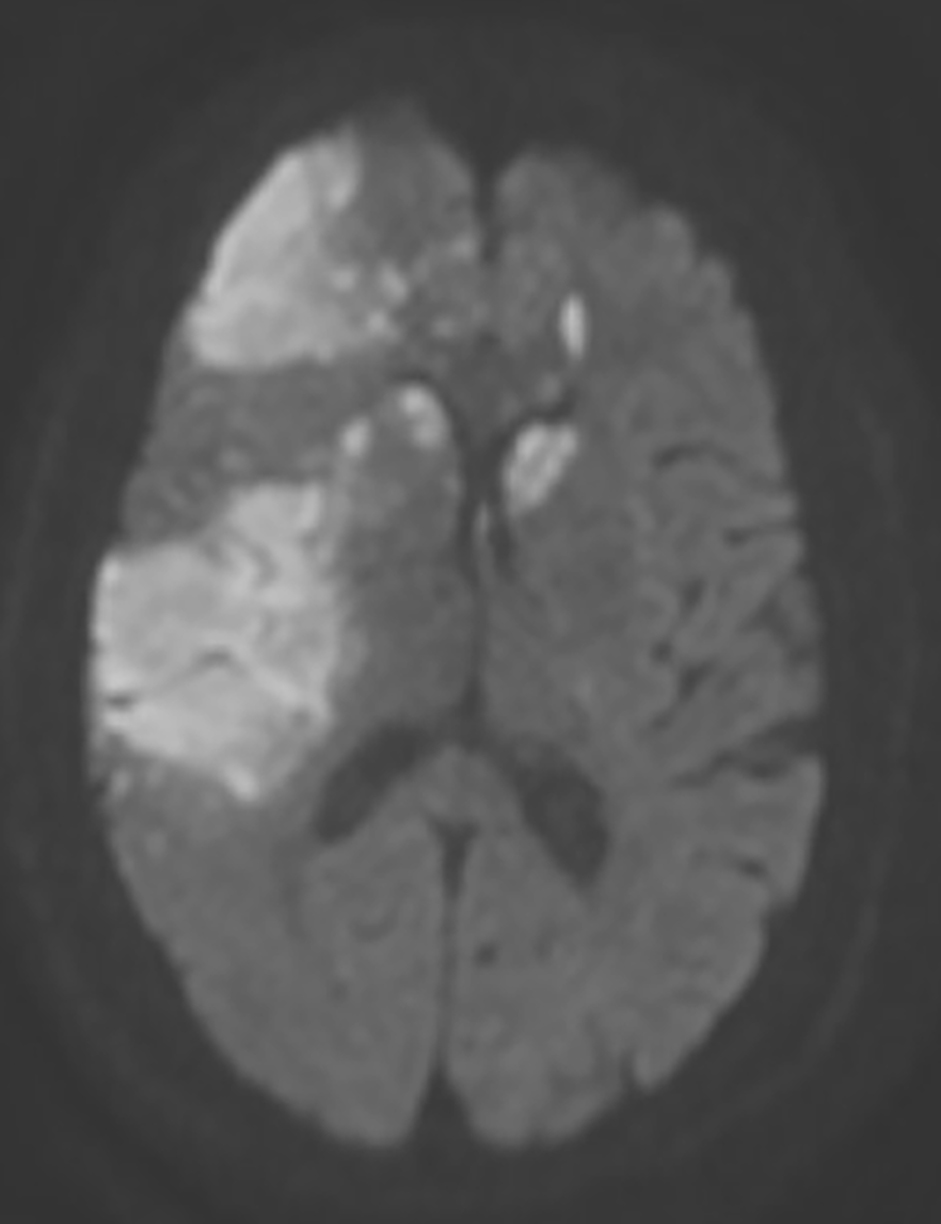Category: Choreas (Non-Huntington's Disease)
Objective: To describe an unusual presentation of poststroke movement disorders.
Background: Movement disorders occur uncommonly in association with stroke (1%), despite the frequent involvement of the basal ganglia. Hemichorea/hemibalism and dystonia are the most common.
Method: Case report of a patient with sudden-onset of right hemichorea with left hemidystonia after an ischemic stroke in the right internal carotid artery (ICA) and left anterior cerebral artery (ACA) territories.
Results: A 58-year-old woman came to the emergency department with left hemiparesis of sudden onset. She had a history of aneurysms in both ICAs treated with flow diverter devices (left ICA two years earlier and right ICA three days before admission). Brain CT-scan was normal, Angio-CT showed occluded right ICA and perfusion-CT showed hypoperfusion of right ICA and left ACA territories. She underwent mechanical thrombectomy with partial recanalization; during the arteriographic procedure, a hypoplasic left A1 segment with common origin of both ACAs from right ICA were seen [Figure 1]. Twenty-one days after admission she developed irregular involuntary right-sided movements (chorea), dystonia of left limbs and cervical dystonia with torticollis to the right and laterocollis to the left . Brain MRI showed right fronto-parietal cortex, caudate and lenticular nucleus and left caudate nucleus restricted diffusion [Figure 2]. Diagnosis of right hemichorea with left hemidystonia of vascular origin was made. Clonazepam 0,5mg twice daily was started, with little improvement.
Conclusion: Even though ipsilateral hemichorea and hemidystonia of vascular origin can rarely occur simultaneously, to our knowledge, this is the first reported case of the occurrence of each movement disorder in different body sides following an acute ischemic stroke.
To cite this abstract in AMA style:
P. Lorenzo Barreto, R. Sainz Amo, F. Pérez Trapote, A. Sáez Marín, E. Stiauren Fernández, JC. Martínez Castrillo, S. García Madrona. Hemichorea and contralateral hemidystonia after acute stroke [abstract]. Mov Disord. 2021; 36 (suppl 1). https://www.mdsabstracts.org/abstract/hemichorea-and-contralateral-hemidystonia-after-acute-stroke/. Accessed April 17, 2025.« Back to MDS Virtual Congress 2021
MDS Abstracts - https://www.mdsabstracts.org/abstract/hemichorea-and-contralateral-hemidystonia-after-acute-stroke/


